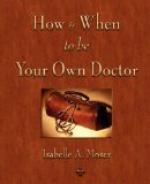These changes were however, necessary for my survival. Any person who works with, yes, lives on a day-to-day basis with sick people and who is constantly giving or outflowing must take time out to refill their vessel so that they can give again. Failure to do this can result in a serious loss of health, or death. Most healers are empathic people who feel other peoples’ pains and stresses and sometimes have difficulty determining exactly what is their own personal ‘baggage’ and what belongs to the clients. This is especially difficult when the therapy involves a lot of ‘hands on’ techniques.
After leaving Great Oaks it took me a couple of years to rest up enough to want to resume practicing again. This time, instead of creating a substantial institution, Steve, my second husband and my best friend, built a tiny office next to our family home. I had a guest room that I would use for occasional residential patients. Usually these were people I had known from Great Oaks days or were people I particularly liked and wanted to help through a life crisis.
At the time I am writing this book over ten years have passed since I sold Great Oaks. I continue to have an active outpatient practice, preferring to protect the privacy of my home and family life since I was remarried by limiting inpatients to a special few who required more intensive care, and then, only one at a time, and then, with long spells without a resident.
Chapter Two
The Nature and Cause of Disease
From The Hygienic Dictionary
Toxemia. [1] “Toxemia is the basic cause of all so-called diseases. In the process of tissue-building (metabolism), there is cell-building (anabolism) and cell destruction (catabolism). The broken-down tissue is toxic. In the healthy body (when nerve energy is normal), this toxic material is eliminated from the blood as fast as it is evolved. But when nerve energy is dissipated from any cause (such as physical or mental excitement or bad habits) the body becomes weakened or enervated. When the body is enervated, elimination is checked. This, in turn, results in a retention of toxins in the blood—the condition which we speak of as toxemia. This state produces a crisis which is nothing more than heroic or extraordinary efforts by the body to eliminate waste or toxin from the blood. It is this crisis which we term disease. Such accumulation of toxin when once established, will continue until nerve energy has been restored to normal by removing the cause. So-called disease is nature’s effort to eliminate toxin from the blood. All so-called diseases are crises of toxemia.” John H. Tilden, M.D., Toxemia Explained. [2] Toxins are divided into two groups; namely exogenous, those formed in the alimentary canal from fermentation and decomposition following imperfect or faulty digestion. If the fermentation is of vegetables or fruit, the toxins are irritating, stimulating and enervating, but not so dangerous or destructive to organic life as putrefaction, which is a fermentation set up in nitrogenous matter—protein-bearing foods, but particularly animal foods. Endogenous toxins are autogenerated. They are the waste products of metabolism. Dr. John. H. Tilden, Impaired Health: Its Cause and Cure, 1921.




